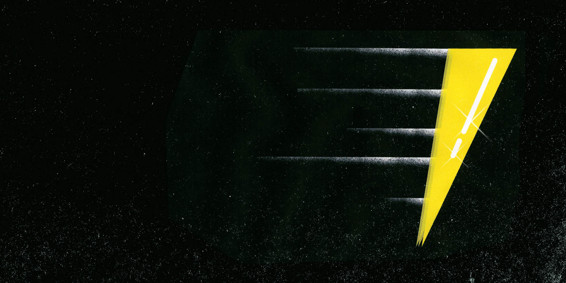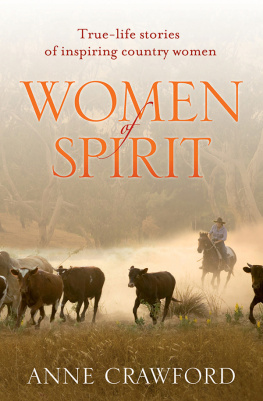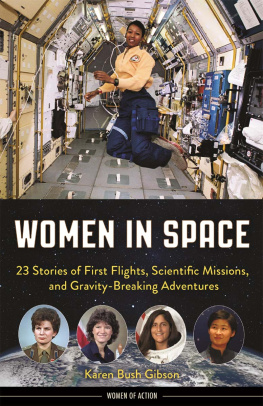

Text copyright 2016 by Ariel Waldman.
Illustrations copyright 2016 by Chronicle Books LLC. All rights reserved. No part of this book may be reproduced in any form without written permission from the publisher.
ISBN 978-1-4521-4871-7 (epub, mobi)
Library of Congress Cataloging-in-Publication Data
Waldman, Ariel, author.
Whats it like in space? : stories from astronauts whove been there / Ariel Waldman ; illustrations by Brian Standeford.
pages cm
ISBN 978-1-4521-4476-4 (hc)
1. Life support systems (Space environment)Anecdotes. 2. Space flightPhysiological effectAnecdotes. 3. AstronauticsAnecdotes. 4. AstronautsAnecdotes. I. Standeford, Brian, illustrator. II. Title. III. Title: What is it like in space.
TL1500.W35 2016
629.45'00922dc23
2015018968
Illustrations by Brian Standeford
Design and additional illustration by Neil Egan
Chronicle Books LLC
680 Second Street
San Francisco, CA 94107
www.chroniclebooks.com
Introduction
If somebodyd said before the flight, Are you going to get carried away looking at the Earth from the Moon? I would have [said], No, no way. But yet when I first looked back at the Earth, standing on the Moon, I cried. Alan Shepard
Whats it like in space? Its something many of us have wondered about, and something, of course, that astronauts are asked all the time. Much like space exploration itself, the question is boundless and hopeful. Asking whats it like in space? represents our collective aspiration to dare how far humans can go and what we can achieve when we get there.
One of the first people to attempt to scientifically answer the question was the astronomer Johannes Kepler. In the early seventeenth century, three centuries before a human landed on the Moon, Kepler wrote Somnium, a work of science-based fiction about humans in space. Somnium detailed how humans could conduct science in space and how the Earth could be observed from the viewpoint of the Moon. The first Moon landing was still 361 years into the future at the time of Keplers writing, but he was one of the first to declare it scientifically possible and to imagine what it would be like to travel there.
Despite hundreds of years of scientific speculation, no one really knew what space would be like. Leading up to humans taking to spaceflight in the early 1960s, doctors were unsure about everythingfrom whether people would physically be able to eat in space to whether their eyes would float freely around in their heads. During the Cold War, astronauts and cosmonauts alike were subjected to intense and thorough tests to ensure that they would be able to handle every scenario imaginable. It was only by pushing the boundary of how far humans could go that we could truly answer the question of what its like in space.
In my work, I make space exploration more accessible. Working on this book has been a fascinating opportunity to learn more about human spaceflightan aspect of space exploration that has only been experienced by a select few over the fifty-plus years since its inception. But it was mostly just a lot of fun to talk to astronauts who generously shared their time and enthusiasm. The stories range from the comical to the peculiar to the awe-inspiring, but in researching or interviewing each astronaut they all shared a similar undercurrent: a quiet determination to tackle the unknown.
Despite several decades of human spaceflight, any answers to whats it like in space? are provisional and will continue to change as the exploration widens, both in scope and accessibility. I enjoy reading through these stories and meditating on what someone four hundred years in the future might write about what its like in space. I can only hope that space exploration will slowly, but surely, become more accessible over the coming decades and centuries. Maybe someday this book will be as quaint as books describing what its like to fly in an airplane.
NO ONE CAN HEAR YOU BURP
In space, no one can hear you burp. Seriously. The lack of gravity means you cant keep your food down in your stomach if you try to expel gas out through your mouth. Thus most attempts to burp would actually result in vomiting. Needless to say, this is why there is no soda in space.

MYSTERIOUS HEADACHES
Some of the first astronauts to use the space shuttle reported experiencing mysterious headaches while in space. Lots of money and time were spent researching why. Intracranial pressure? Insufficient oxygen? No. Coffee has to be freeze-dried before being transported to space. This process reduces coffees caffeine levels so significantly that the astronauts headaches were actually a symptom of caffeine withdrawal.

MOON FACE
If you ever go to space, make sure you go for longer than four days, advises four-time space shuttle astronaut Jim Newman. Within the first few hours of being in space, you get what astronauts call Moon Face. Due to the lack of gravity, your body cant keep the flow of blood as well-distributed below your head. For the first few days in space, your face becomes bloated until your body figures out how to properly distribute blood in microgravity. Generally after the fourth day your face returns to normal and you can more comfortably enjoy your space travel.

LEAKY SUITS
The early male astronauts often had leaky spacesuits. They would frequently complain about their urine leaking into other areas of the suit. For a while, no one could figure out what was wrong with the spacesuits. NASA eventually realized the leaking was due to the oversized condom catheters the astronauts were using. Turns out that when the astronauts were asked by doctors what size they needed, they would often ask for large.

URINE ICICLE
The space shuttle used a venting system to expel astronauts liquid waste away from it and into space. In 1984, this system broke down. A huge icicle of urine formed in space, attached to the base of the shuttle. Fearing that the icicle could do damage to the spacecraft, the astronauts had to use a robotic arm to snap it off.

BACKWARDS DREAMS
Astronauts sometimes experience backwards dreams while sleeping in space. Day 52 in space. Had my first backwards dream last nightgot back to Earth and gravity wasnt normal, tweeted Reid Wiseman during his stay on the International Space Station. After returning to Earth, Wiseman reported that he still had dreams in which Earths gravity was abnormal, but that they faded after a week of being back on the ground.

Next page














